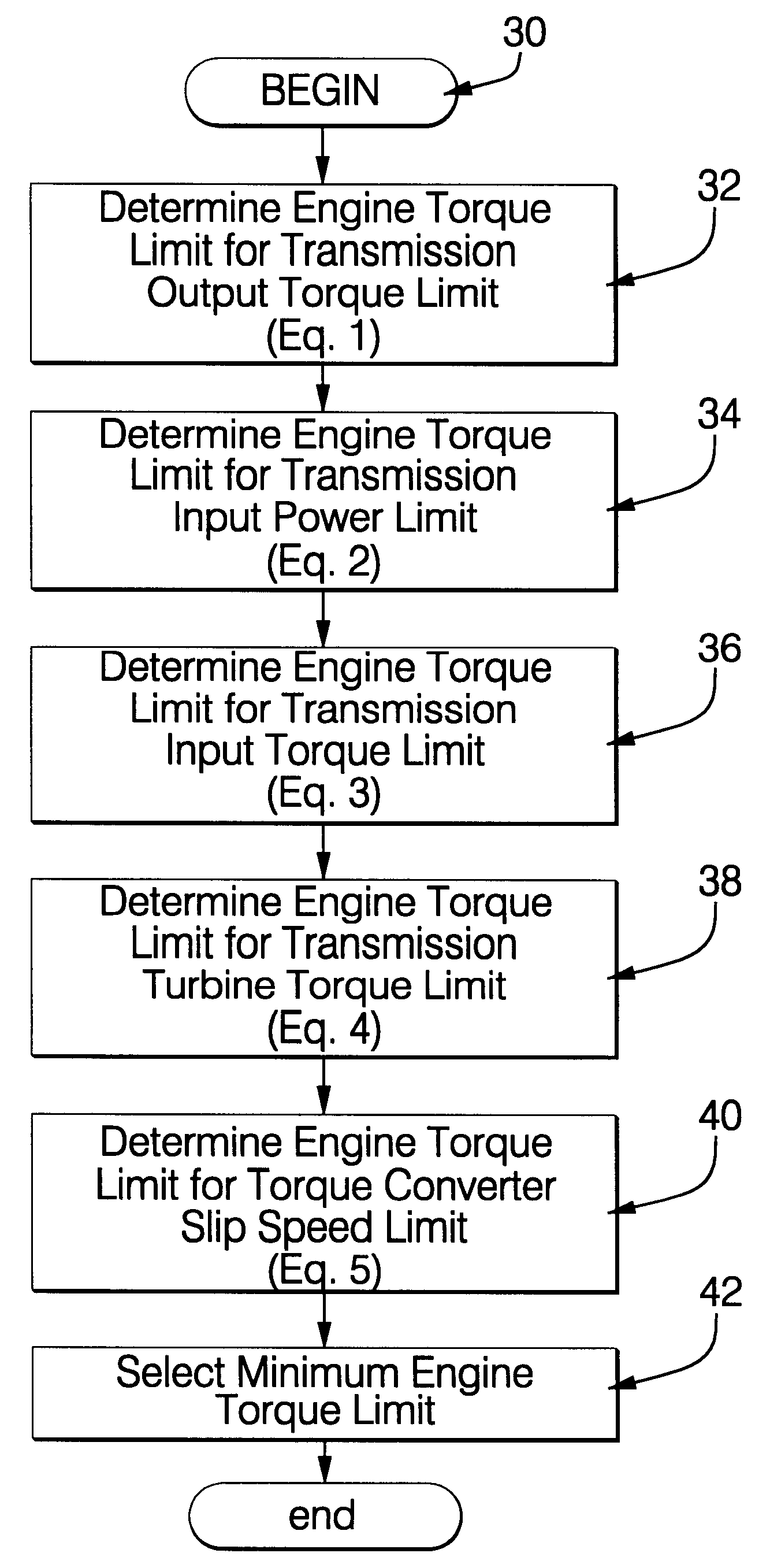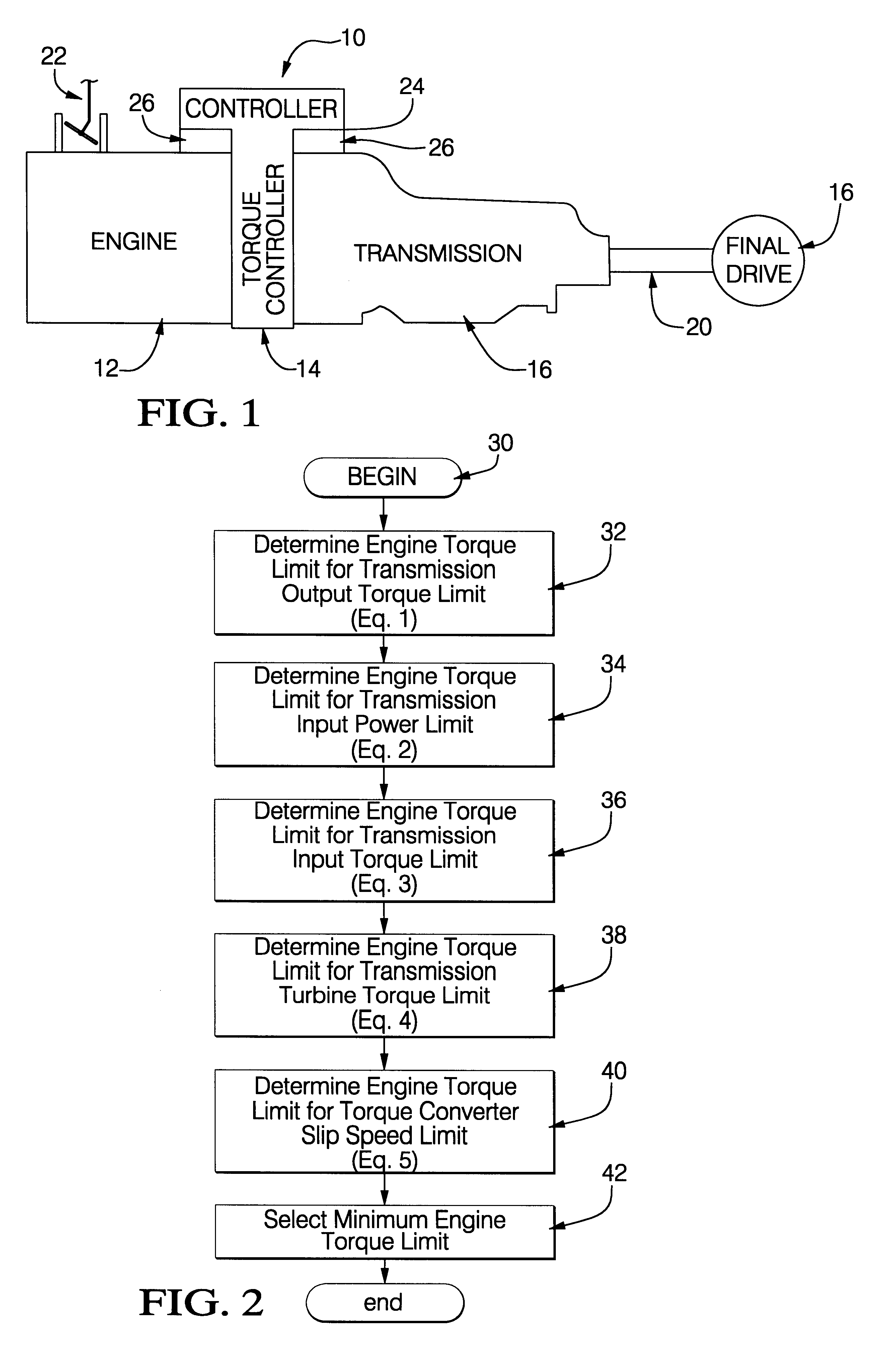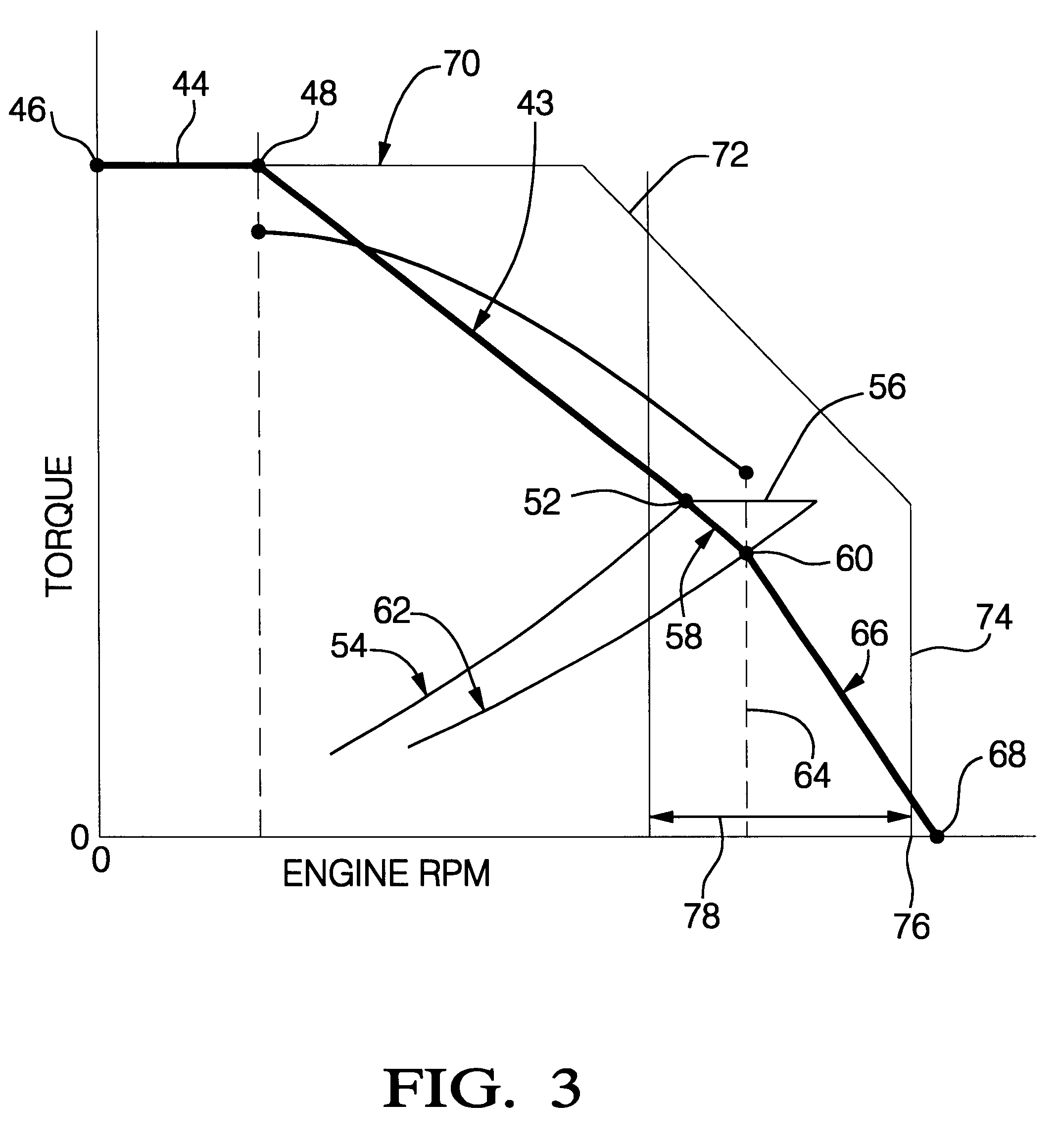Torque and power control in a powertrain
a powertrain and torque technology, applied in the direction of electric control, gearing control, gearing elements, etc., can solve the problems of detriment to the operation of the powertrain, and achieve the effect of improving torque and power control of the powertrain
- Summary
- Abstract
- Description
- Claims
- Application Information
AI Technical Summary
Benefits of technology
Problems solved by technology
Method used
Image
Examples
Embodiment Construction
A powertrain 10, shown in FIG. 1, includes an engine 12, a torque converter 14, a multi-speed transmission 16, and a final drive 18. The engine 12 is a conventional internal combustion prime mover. The torque converter 14 is a conventional hydrodynamic mechanism. The transmission 16 is a conventional planetary gear mechanism that may be constructed in accordance with the gearing mechanism described in U.S. Pat. No. 4,070,927 issued Jan. 31, 1978. The transmission 16 preferably includes a conventional torque converter clutch that is engaged during vehicle operation to improve the fuel economy. The design and control of torque converter clutches is well-known to those skilled in the art. The final drive 18 is a conventional differential type gear mechanism, and is connected with the transmission 16 by a shaft 20. The powertrain may also include a conventional transfer gear mechanism, not shown, that would generally be located at the transmission output and divides the power flow betwe...
PUM
 Login to View More
Login to View More Abstract
Description
Claims
Application Information
 Login to View More
Login to View More - Generate Ideas
- Intellectual Property
- Life Sciences
- Materials
- Tech Scout
- Unparalleled Data Quality
- Higher Quality Content
- 60% Fewer Hallucinations
Browse by: Latest US Patents, China's latest patents, Technical Efficacy Thesaurus, Application Domain, Technology Topic, Popular Technical Reports.
© 2025 PatSnap. All rights reserved.Legal|Privacy policy|Modern Slavery Act Transparency Statement|Sitemap|About US| Contact US: help@patsnap.com



